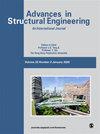Deep transfer learning architecture for suspension system fault diagnosis using spectrogram image and CNN
IF 2
4区 工程技术
引用次数: 0
Abstract
The suspension system plays a critical role in automobiles, ensuring the safety and comfort of vehicle occupants. However, extended usage, varying road conditions, external forces, and heavy loads can result in damage and faults within the internal components of the suspension system. To mitigate the occurrence of suspension system failures, the development of an effective fault diagnosis system for suspension components becomes imperative. Traditional fault diagnosis techniques often heavily rely on human expertise, which comes with certain limitations. In response, researchers have embraced intelligent fault diagnosis techniques, with transfer learning-based fault diagnosis emerging as a highly effective approach. By leveraging transfer learning, it becomes possible to extract and select fault-specific features for classification purposes. Deep learning-based methods, with their capacity to extract significant features and essential information from raw data, offer notable advantages. Despite these advantages, the implementation of deep learning-based fault diagnosis in suspension systems remains relatively unexplored and limited. In this article, a deep transfer learning architecture specifically designed for fault diagnosis in suspension systems is proposed. The approach involves employing 12 pre-trained networks and tuning them to identify the optimal model for fault diagnosis. Time domain vibration signals obtained from suspension systems under seven fault conditions and one good condition are transformed into spectrogram images. These images are then pre-processed and used as input for the pre-trained networks in fault classification. The results demonstrate that among the 12 pre-trained networks, AlexNet outperforms the others in terms of classification accuracy while requiring the least amount of training time. Therefore, AlexNet network in conjunction with the spectrogram images of time domain vibration signals for applications in suspension system fault diagnosis is highly recommend.使用频谱图图像和 CNN 的悬挂系统故障诊断深度迁移学习架构
悬挂系统在汽车中起着至关重要的作用,可确保车内人员的安全和舒适。然而,长时间的使用、不同的路况、外力和重载都可能导致悬挂系统内部组件的损坏和故障。为了减少悬挂系统故障的发生,开发一套有效的悬挂部件故障诊断系统势在必行。传统的故障诊断技术通常在很大程度上依赖于人类的专业知识,这具有一定的局限性。为此,研究人员开始采用智能故障诊断技术,其中基于迁移学习的故障诊断技术成为一种非常有效的方法。通过利用迁移学习,可以提取和选择故障特定特征进行分类。基于深度学习的方法能够从原始数据中提取重要特征和基本信息,具有显著的优势。尽管有这些优势,但在悬挂系统中实施基于深度学习的故障诊断仍然相对缺乏探索,而且范围有限。本文提出了一种专为悬挂系统故障诊断设计的深度迁移学习架构。该方法包括采用 12 个预训练网络,并对其进行调整,以确定故障诊断的最佳模型。在七种故障情况和一种良好情况下从悬挂系统获取的时域振动信号被转换为频谱图图像。然后对这些图像进行预处理,并将其作为故障分类中预训练网络的输入。结果表明,在 12 个预训练网络中,AlexNet 的分类准确性优于其他网络,同时所需的训练时间也最少。因此,强烈建议将 AlexNet 网络与时域振动信号的频谱图图像结合起来,应用于悬挂系统的故障诊断。
本文章由计算机程序翻译,如有差异,请以英文原文为准。
求助全文
约1分钟内获得全文
求助全文
来源期刊

Advances in Mechanical Engineering
Engineering-Mechanical Engineering
自引率
4.80%
发文量
353
期刊介绍:
Advances in Mechanical Engineering (AIME) is a JCR Ranked, peer-reviewed, open access journal which publishes a wide range of original research and review articles. The journal Editorial Board welcomes manuscripts in both fundamental and applied research areas, and encourages submissions which contribute novel and innovative insights to the field of mechanical engineering
 求助内容:
求助内容: 应助结果提醒方式:
应助结果提醒方式:


